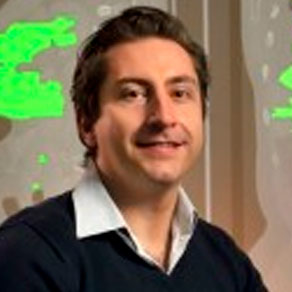
Nadya Chernyavskaya
[intermediate] Graph Networks for Scientific Applications with Examples from Particle Physics
Summary
In recent years, graph neural networks (GNNs) have acquired enormous popularity thanks to their elegant applicability and handling of non-structured data in graph related problems. In particle physics, in particular, GNNs have been shown to achieve excellent performance for many different tasks, such as jet tagging (graph classification), anomaly detection (out-of-distribution detection) and particle generation (point-cloud generation). In this workshop, I will first give an introduction to the GNNs and cover the recent advances in the field. During the practical part, participants will first learn how to implement a graph convolutional neural network from scratch in Pytorch. In the second part of the practical demonstration, I will show how to implement a GNN for jet tagging at the Large Hadron Collider at CERN using a modern Pytorch-Geometric library. I will also cover the computational overheads that are common for GNNs, and how to overcome them.
Syllabus
- Introduction to Graph Neural Networks (GNN)
- Applications of GNNs
- GNNs in particle physics, overview and concrete examples of the state-of-the-art
- Graph Convolutional Networks
- Graph Auto-Encoders
- Graph Attention Network
- Graph Generative Networks
- Practical demonstration #1 : implementation of a simple GNN from scratch in Pytorch
- Practical demonstration #2 : implementation of an advanced GNNs for jet tagging at the Large Hadron Collider at CERN using a popular Pytorch-Geometric library
References
[1] Y. Wang et al. (2018) Dynamic Graph CNN for Learning on Point Clouds. https://arxiv.org/abs/1801.07829
[2] P. Veličković et al. (2018) Graph Attention Networks. https://arxiv.org/abs/1710.10903
[3] T. Kipf, M. Welling (2017) Semi-Supervised Classification with Graph Convolutional Networks. https://arxiv.org/abs/1609.02907
[4] P. Battaglia et al. (2016). Interaction Networks for Learning about Objects, Relations and Physics. https://arxiv.org/abs/1612.00222
[5] J. Shlomi, P. Battaglia, J.-R. Vlimant (2021) Graph neural networks in particle physics. https://doi.org/10.1088/2632-2153/abbf9a
[6] S.R. Qasim, N. Chernyavskaya et al. (2022) End-to-end multi-particle reconstruction in high occupancy imaging calorimeters with graph neural networks. https://arxiv.org/abs/2204.01681
[7] Y. Iiyama et al. (2021) Distance-Weighted Graph Neural Networks on FPGAs for Real-Time Particle Reconstruction in High Energy Physics. https://doi.org/10.3389/fdata.2020.598927
[8] R. Kansal et al. (2021) Particle Cloud Generation with Message Passing Generative Adversarial Networks. https://arxiv.org/abs/2106.11535
[9] S. Tsan et al. (2021) Particle Graph Autoencoders and Differentiable, Learned Energy Mover’s Distance. https://arxiv.org/abs/2111.12849
[10] M. Fey, and J. Lenssen (2019) Fast Graph Representation Learning with PyTorch Geometric. https://arxiv.org/abs/1903.02428
Pre-requisites
Basic knowledge of statistics, probability theory, and experience with machine learning are required. A basic understanding or interest in particle physics is beneficial but not required.
Short bio
Nadya Chernyavskaya is a Senior Research Fellow at CERN. Her current research focuses on the development of graph neural networks for applications in particle physics, and ML algorithms with ultra-low latency and resource requirements for real-time inference on FPGAs. Nadya is a member of the CMS Collaboration at CERN – one of the four major experiments at the Large Hadron Collider. Her research revolves around development of innovative data analysis techniques to extract interesting signatures from extremely large and noisy datasets, which helps physicists like herself answer fundamental questions about the universe. She received her PhD in Physics from ETH Zürich, MSc in High Energy Physics from Ecole Polytechnique Paris and ETH Zürich, and BSc in Applied Mathematics and Physics from the Moscow Institute of Physics and Technology.




















